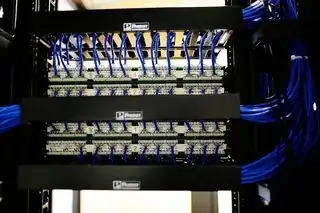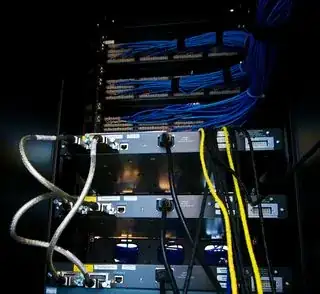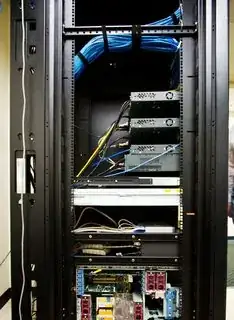I have a 4-post 19" rack with a 72-port 2U quickport patch panel where horizontal structured cabling terminates. The cables are bundled and enter the rack at the rear. From the back of the rack, they need to
- get near the front of the rack directly behind the patch panel,
- fan out to the whole width of the patch panel, and
- somehow have enough slack so that they can be terminated.
What is the proper way to accomplish this?
How should the bundle of cable be supported on its way from the rear to the front of the rack?
What considerations determine the ideal distance from the front of the rack to begin fan out?
How can I prevent droop in the fanned-out section directly behind the patch panel from interfering with the rack unit below?


